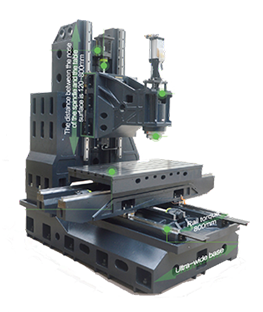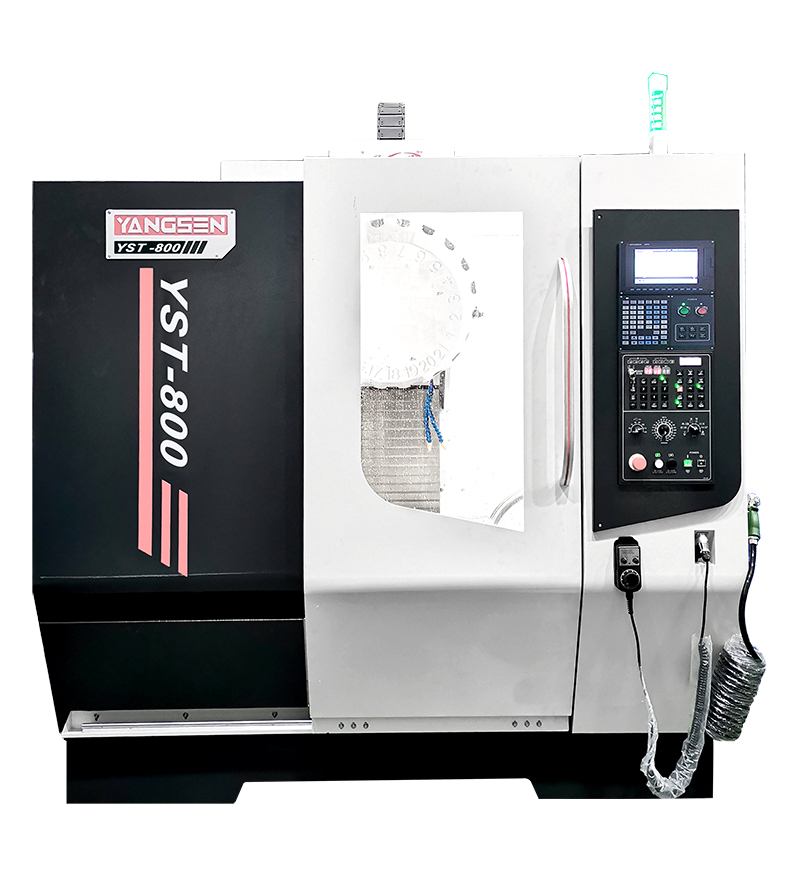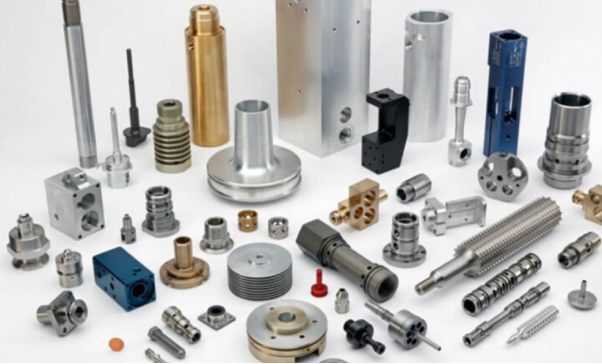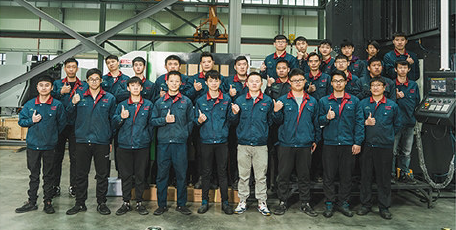NC Prototype Machining is a vital step in the manufacturing process. With it, one can turn an idea into a real, touchable object. This blog offers an in-depth look into this craft. Dive into this guide to comprehend the importance of this technique, its application, and how it plays a big part in the world of manufacturing.
The dawn of machining actually traces back to ancient civilizations. Then, manual labor ruled, laborious and prone to errors. Next, the industrial revolution swung in, mechanizing many operations. But, true precision emerged with the advent of CNC technology.
Numerically controlled machines, the forerunners of CNC, appeared in the 1940s. By the 1980s, Computer Numerical Control (CNC) took root. CNC prototype machining arrived, transforming industries. Complex auto parts production became easy.
Time spent on each piece shrank dramatically. Prototype production became cost-effective, leading to product innovations.
The heart of any CNC machine, the control panel, harbors the computer. The computer guides the machine. Workers input instructions through a console. The control panel processes these instructions.
The spindle, a vital part, provides the speed. Rotations per minute (RPM) can reach high numbers. Spindles move cutters to sculpt raw materials into final products.
CNC machines hold various cutters. Each cutter provides a different shape. Cutter speed and depth of cut influence the final product.
The bed, often made of cast iron, provides a solid base. It supports the weight of other components and workpieces.

Axes, labeled X, Y, and Z, give direction to the machine. The control panel commands the machine on which axis to move. Each axis represents a different dimension.
A coolant supply prevents overheating. Coolant flows to the cutting area, keeping temperatures stable. This preserves the lifespan of the machine and tools.
The tool turret houses different tools for varied operations. Each position holds a distinct tool. The control panel commands the turret to select the correct tool.
The chuck grips the workpiece firmly during machining. It holds the piece in place as tools shape it.
The tailstock supports the other end of the workpiece. It ensures stability during the machining process.
Power supply, a crucial aspect, provides the energy needed for operations. Voltage requirements vary between different CNC machines.
Drive motors give motion to the machine. These motors turn digital commands into physical movements. Different motors control different axes.
The gantry machining center, a bridge-like structure, allows tools to move. They traverse along the X and Y axes.
The slide moves the tool holder or workpiece along the Z-axis. Its movement is vertical, enabling depth in cuts.
The carriage holds and moves the tool turret. It moves along the machine bed, directed by the control panel.
Feed rates determine how fast the cutter moves into the workpiece. The control panel sets this rate. Feed rates influence the final surface finish.
Common in CNC Prototype Machining, CNC milling machines employ rotating, multi-point cutters to shape materials. These tools often work with three axes
X, Y, and Z.

Using a stationary cutting tool, lathes remove material from rotating workpieces. In CNC settings, lathes offer superior precision for shaping cylindrical parts.
High-velocity gas, superheated to plasma, is the primary cutting method. Plasma cutters find use in cutting sheet metal and heavy plates.
These CNC tools utilize a high-power laser beam to cut or engrave materials. Their accuracy is unparalleled, especially in engraving complex designs.
EDMs employ electric sparks to shape materials. Wire EDM and die sinking EDM are the two main variants.
A jet of high-pressure water, sometimes mixed with abrasives, cuts through materials. These tools can handle materials that are heat sensitive.
Featuring 4, 5, or even 6 axes of motion, these machines allow complex geometric parts production. They offer unmatched versatility in CNC machining.
As the name suggests, grinding machines grind materials with a rotating wheel. Often, they're used for finishing processes to achieve surface smoothness or precision dimensions.
CNC drilling machines create holes in workpieces. CNC drilling machines ensure precise and repeatable holes in different materials.

Employing high force, punch presses create holes in sheet metal. CNC punch presses allow for rapid, precise hole creation.
CNC routers are typically used for cutting and shaping woods, plastics, and aluminum. They excel in producing intricate shapes and designs.
A subtype of EDM, wire EDM uses a thin wire as the cutting tool. It's capable of cutting intricate designs and small-radius internal corners.
The Swiss-style lathe offers high precision machining, typically for small, complex parts. The guide bushing offers support close to the cutting action, enhancing precision.
Here begins CNC Prototype Machining. Brilliant minds gather, birthing innovations. Ideas form, becoming foundations for future creations.
A raw blueprint develops, illustrating the original thought. Pencil traces lines on paper, outlining the soon-to-be model.
On computer screens, 3D models grow. Computer-Aided Design, or CAD, breathes life into ideas, digitally molding them into potential products.
Different projects require diverse materials. Metals like aluminum, stainless steel, or plastic types such as ABS, nylon serve various needs. Experts discern, choose the apt one.
Precision matters in machining. The margin of error, known as tolerance, is crucial. An analysis ensures parts fit together flawlessly.
The virtual realm tests reality. Here, CNC operations replicate, predicting potential hiccups. This preemptive approach saves costly, unnecessary errors.
The CNC machine needs directions. The software crafts a path for the tool, maneuvering around the material.
Machines speak a unique language, the G-code. It translates the toolpath into instructions. The CNC machine, in turn, follows the command.
Digital design now becomes physical. CNC machines carve, drill, and shape the material, creating the prototype.
Prototypes face rigorous scrutiny. Every function, every dimension gets tested. If all checks out, mass production ensues.

A go-to choice in CNC Prototype Machining, Aluminum offers lightness and strength. Known for its excellent machinability, Aluminum often forms the backbone of several prototypes.
With its resistance to corrosion, Stainless Steel marks its presence in this industry. Its toughness makes Stainless Steel a popular choice for intricate, high-strength prototypes.
Machining prototypes with Brass ensures excellent thermal conductivity and corrosion resistance. Brass stands out due to its appealing gold-like aesthetics.
An excellent conductor of electricity, Copper finds its place in electrical components. However, Copper's soft nature necessitates careful machining to maintain precision.
Titanium's superior strength-to-weight ratio makes it indispensable for high-performance prototypes. Nevertheless, its hardness demands skilled handling during machining.
Several plastic types suit CNC Prototype Machining. Ease of shaping, cost-effectiveness, and versatility define plastic as a preferred material in diverse prototypes.
Lightweight yet durable, Foam fits perfectly for prototype models needing dimensional stability. Foam's easy machining leads to speedy production.
Though not as common as metals or plastics, Wood can serve as a cost-effective material for non-industrial prototypes.
Despite being challenging to machine, Carbon Fiber's superior strength and lightness make it a favored choice for high-tech prototypes.
Its transparency and resistance to impact make Polycarbonate ideal for see-through prototypes. Moreover, Polycarbonate's machinability encourages its use.
ABS, a common plastic, offers a balanced blend of toughness and ease of machining. In addition, ABS's smooth finish ensures aesthetically pleasing prototypes.
Recognized for its high temperature resistance and strength, PEEK becomes suitable for prototypes exposed to extreme conditions.
Nylon's resistance to wear, coupled with its machinability, proves beneficial in creating durable prototypes.
Chosen for transparent prototypes, Acrylic provides clarity akin to glass. It also impresses with its resistance to weather and UV light.
Being light, durable, and resistant to chemicals, PVC becomes a choice material for various prototypes.
Best known for its non-stick properties, Teflon also brings chemical resistance. Hence, Teflon plays a role in prototypes interacting with chemicals.
Examine CAD files thoroughly. Look for possible manufacturing challenges. Spot errors early. Correct them to save time, costs, and materials.
Next, select appropriate materials. Consider strength, durability, and cost. Different CNC tasks require different materials. Steel, aluminum, or plastics, each has unique properties.
Choose the correct tool. Consider the job and material. End mills, drills, or taps, each tool plays a unique role.
Set the operation sequence. Optimize for speed and accuracy. The correct sequence can save precious time.
Estimate job duration accurately. Factor in design complexity, tool paths, and machine speed. Accurate estimates help with project planning.
Prioritize safety at all times. Adhere to safety protocols. Use proper protective gear. Safety minimizes accidents, ensuring smooth operations.
Secure the workpiece correctly. Use clamps, vises, or jigs. Proper workholding guarantees precise and accurate cuts.
Before machining, check the program. Confirm the tool paths. Correct errors. Verify machine and tool compatibility. An error-free program ensures quality output.
Calibration is vital. Confirm machine accuracy. Ensure correct alignment. Regular calibration prolongs machine life.
Lastly, perform a trial run. Check for possible errors. Adjustments made now can prevent costly mistakes later.
The procedure starts with CNC Prototype Machining setup. Accurate setup of the machine's axis coordinates, fixture offsets, and tool offsets ensures precision.
Following setup, CNC code programming is next. G-code, the universal language for CNC machines, guides the machine on path, speed, and depth.
After programming, raw material loading comes next. The right positioning ensures uniform cutting throughout the material.
Cutting forms the core of the process. Controlled by programmed commands, the machine tool cuts the raw material into desired shapes.
Following the cutting, an inspection stage verifies the dimensions of the machined part. Precise measurements guarantee quality and consistency.
Next, unloading of the machined part takes place. Careful handling prevents damage to the newly machined part.
After unloading, cleaning of the machine becomes crucial. Dust and debris removal ensure the longevity of the CNC machine.
Lastly, the deburring process removes any sharp edges. The result is a smooth and finished part, ready for use.
Routine checks maintain the working order of the CNC machine, helping to spot issues before they escalate.
Tolerance checks ensure the machined part's dimensions remain within an acceptable range. Precision and consistency are paramount in machining.
The surface finish evaluation assesses the quality of the machined part. A smooth finish indicates accurate machining.
Running test programs helps confirm the machine's readiness. It ensures the machine functions as expected, preventing any surprise breakdowns.
A thorough program review avoids errors. The CNC program should be free from errors for the machine to run smoothly.
Material quality control ensures the raw materials meet standards. Only good quality materials yield high-quality machined parts.
Monitoring the tool condition prevents breakages. Sharp, well-maintained tools perform better and last longer.
Process verification confirms each machining step's success. Continuous checks assure production accuracy and efficiency.
Tool breakage can halt operations. Regular inspections and maintenance help prevent this common issue.
A poor surface finish indicates issues with cutting parameters. Adjusting feed rate or speed can rectify this.
Incorrect dimensions often result from improper setup. Verification of machine coordinates and offsets can correct the issue.
Machine errors can cause operational failures. Regular maintenance and inspections help to detect and fix these issues.
Material deflection, if not addressed, affects accuracy. Ensuring rigid workpiece clamping mitigates deflection.
Toolpath issues compromise the finished part's quality. Rechecking programming parameters solves this problem.
Excessive noise suggests machine problems. Inspections can pinpoint the source, like a worn-out spindle or misaligned part.
Unusual vibrations can cause inaccuracies in machining. Balancing the machine components helps to eliminate such vibrations.
Post-processing in CNC Prototype Machining transforms a raw component into a finished product. After the CNC machine carves parts, post-processing refines them.
By removing rough edges and enhancing surfaces, post-processing provides the desired look and feel. Notably, materials such as metals and plastics benefit greatly.
For example, metals need heat treatment for strength. Plastics may need sanding for a smoother finish. Consequently, post-processing is a critical, value-adding stage in CNC machining.
Sanding creates smooth surfaces. Various grit sizes tailor the finish. From 60-grit for large burrs to 1000-grit for a glossy shine, sanding covers a wide spectrum of finishes.
Bead blasting uses fine glass beads at high pressure. This technique provides a uniform, matte surface. It's ideal for hiding machining marks and light surface scratches.
By immersing aluminum parts in a chemical bath, anodizing provides corrosion and wear resistance. Plus, the process allows for color customization.
Applying a paint layer gives a vibrant, protective finish. Paints also provide corrosion protection, especially on metals.
This process alters the physical properties of the material. It improves hardness, strength, and resistance to wear. Heat treating is common with steel and aluminum.
A method for refining surfaces, polishing brings a mirror-like shine to parts. It is suitable for aesthetic purposes or for parts needing low friction.
Plating deposits a metal layer onto the surface. For example, chrome or nickel plating improves wear and corrosion resistance.
Laser engraving and milling machine adds information or designs to parts. Text, logos, or barcodes can be engraved with precise control.
Various coatings provide protective or functional benefits. For instance, Teflon coating reduces friction, while zinc coating protects against rust.
Silk screening applies logos or designs using ink. It's common in cosmetic parts like faceplates or control panels.
Understanding CNC Prototype Machining opens new doors in the manufacturing sphere. Mastery of this method aids in creating flawless products from mere concepts. For a deeper dive into the world of CNC Prototype Machining, explore the resources and services offered at CNCYANGSEN. Gain the edge needed to transform ideas into tangible reality with precision and efficiency.
